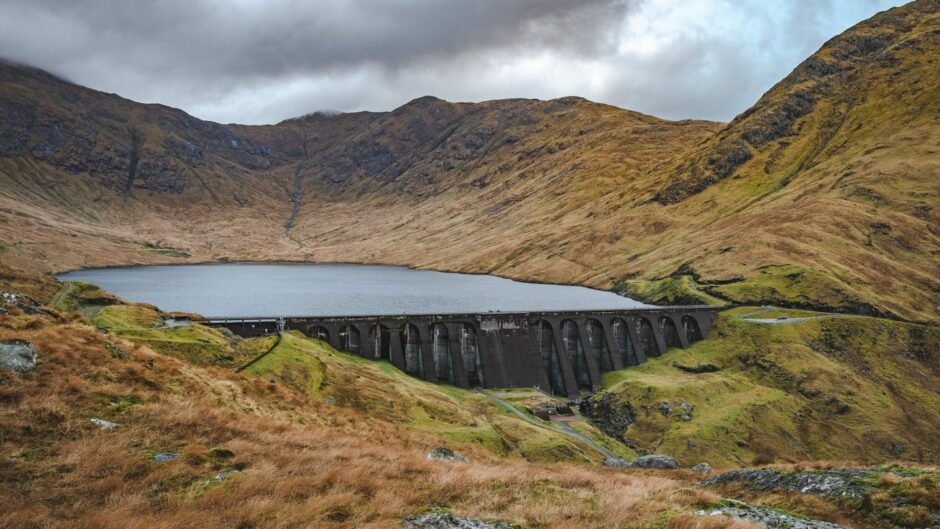
In all discussion about the drive for renewables and the need to wean ourselves off fossil fuels, one crucial word is heavily under-represented. That word is “storage’ and I have long found the lack of emphasis on it by policy makers a source of puzzlement.
The simple fact is that we can’t have a renewables-led energy mix without storage as an antidote to intermittency. In the absence of storage, the existing fall-back is gas. So why has the acceleration of reliance on offshore wind not been accompanied by a parallel commitment to massively increase storage capacity?
In Scotland, this is a particular source of mystery. Claims that we generate more power than we use are seriously misleading, unless we can maintain security of supply. And the only green way to achieve that, once nuclear is taken out the equation, is through storage.
Ninety-five per cent of the world’s storage comes from a single technology and it is one with which we are very familiar in Scotland – hydro power or, to be more precise, Pump Storage Hydro. In other words, store the rainfall, pump it up to a dam and then release it when it’s needed to keep the turbines turning. It’s a very old idea with acute current relevance.
The good news is that the urgency of the storage requirement is finally causing it to be taken seriously. At present, there are over six gigawatts of Pump Storage Hydro projects in the Scottish pipeline. The biggest contributor to that total is not one of the big names in the power sector but a small Scottish company which is far ahead of the game.
Supporters of Inverness Caley Thistle are more familiar than most of the country with the company’s name – Intelligent Land Investments – since it adorns the front of the team’s strips. That points to the fact that ILI’s first big pump storage project, known as Red John, is nearby, on the south side of Loch Ness and was consented in 2021.
Despite the Highlands’ historic debt to hydro power, ILI had to work hard to get it approved. Highland Council’s planning committee turned it down twice before it went to a public inquiry which found in its favour. Work is expected to start next year if funding is in place. ILI have two other PSH projects which are at earlier stages in the planning process.
The story behind the Lanarkshire-based company is interesting. Between 2009 and 2016, it was heavily involved in identifying sites for onshore windfarms and taking them through to planning consent. Its chief executive, Mark Wilson, says that as the drive towards renewables intensified, so too did his awareness that storage must become an opportunity, so he started looking at different technologies.
“We looked at green hydrogen but there was no market for it back then. We looked at compressed air in salt mines but there weren’t many salt mines in the UK. So we ended up at the proven technology, Pump Storage Hydro, for which the UK and particularly Scotland are very lucky to have the right topography”.
ILI partnered with consultants AECOM to look at 130 possible locations and boiled these down to “three prime sites” and these are the ones they are now seeking to advance. Mark Wilson says that long duration storage needs policy support from government, not as subsidy but through a cap and floor mechanism similar to interconnectors to underpin the initial capital cost. That is now a live political discussion.
As well as ILI’s 2.5 gigawatts, SSE have plans for 1.5 gigawatts, Drax for 250 gw at Cruachan and Buccleuch Estates 250 gw. A number of smaller schemes are now coming forward as awareness spreads that storage is going to be an essential part of our energy security – and that the field is still relatively wide open. According to National Grid, 50 GW of energy storage will be required by 2050, so it is a very big field!
Another consideration which should endear PSH to politicians is that it will create jobs by the thousand during the construction stages. With so many past disappointments on this front, with renewables creating only a fraction of the promised employment bonanza, the fact there is an indisputable need for people to build these projects comes as a welcome bonus.
In fact, there is an element of back to the future about it. Just as a great army of “the hydro boys” once brought light to even the remotest islands and glens, so their 21st century successors can make a major contribution to the environmental and social imperatives of our own era.
ILI’s role does not end with Pump Storage Hydro. While that technology provides long term storage for upwards of six hours, there is also a need for short term storage through battery technology linked to the grid. Through their experience in onshore wind, ILI developed an encyclopaedic knowledge of the Scottish grid and suitable locations for these units.
Over the past two years, they have been quietly going about the business of identifying sites and offering them to investors. This has revealed a very healthy appetite among investment funds. ILI have now become by far the UK market leader with a pipeline of 2.2 gw of battery storage potential to which they are continually adding.
It is a great story of an innovative, independent company stepping into a breach which needs filling and recognising what seems to have been put on the back burner by big energy companies as well as the politicians – that storage is the missing link in the march to net zero. In fact, says Mark Wilson, “there’s no chance of reaching net zero without it”.
Brian Wilson is a former UK energy minister.
